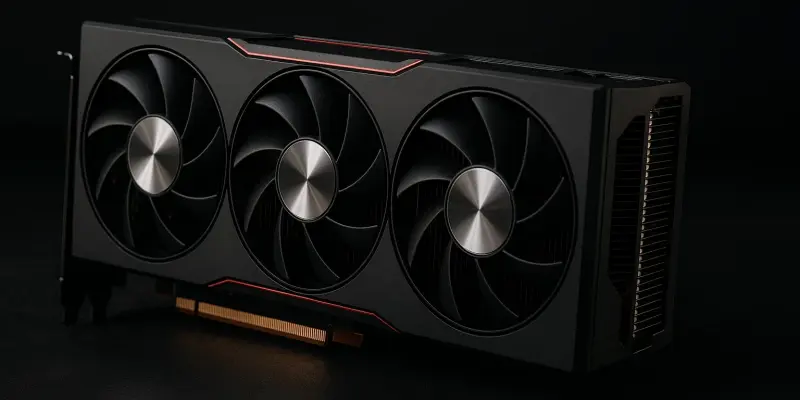In the rapidly evolving realm of graphics processing units (GPUs), AMD has emerged as a formidable player, presenting a strategic challenge to the industry leader, Nvidia. The unveiling of AMD’s MI350 and MI355X GPUs marks a pivotal moment, offering fresh insights into AMD’s strategies and technological breakthroughs, potentially reshaping the competitive landscape of the GPU market. This analysis delves into the implications of AMD’s advancements, examining its roadmap toward challenging Nvidia’s entrenched position.
Understanding the Competitive Landscape in GPU Development
The GPU industry has undergone significant transformations, guided by giants like Nvidia and AMD, each showcasing unique strengths over time. Nvidia’s focus on ecosystem and software integration allowed for seamless user experiences, while AMD emphasized hardware innovation. The sector has experienced shifts, notably with the integration of AI and cloud computing, prompting a redefinition of GPU functionality. This historical context underpins AMD’s current trajectory, characterized by an emphasis on performance and capacity aimed at closing the gap with Nvidia.
AMD’s Strategic Focus and Technological Enhancements
Transformative Performance Advancements
AMD’s unveiling of the MI350 series signifies a substantial leap in GPU performance, aiming to level the playing field with Nvidia. Featuring nearly four times the advancements compared to previous models, AMD dramatically increases its computational prowess for AI tasks. Floating-point performance, a crucial metric for high-performance computing, further substantiates these claims. However, AMD faces the challenge of aligning with Nvidia’s comprehensive system architecture and AI software support, which remain crucial to Nvidia’s dominance.
Memory and Networking Innovations
One of AMD’s most compelling advantages lies in its memory capacity, surpassing Nvidia in bandwidth. The inclusion of 288 GB of HBM3 memory addresses enterprise needs to manage large-scale AI models efficiently, potentially reducing the total cost of ownership. Additionally, AMD’s networking advancements, namely UltraEthernet and UALink, represent strides toward scalable, robust infrastructure for cloud environments. These innovations position AMD as a viable competitor in the networking domain traditionally dominated by Nvidia.
Regional Variations and Market Innovations
Examining AMD’s market strategy reveals region-specific challenges and innovations. Differences in adoption rates and regulatory landscapes across global markets influence AMD’s approach. Partnerships, such as with Oracle for expanded cloud capabilities, demonstrate AMD’s strategic efforts to broaden its market presence. Despite these advancements, misconceptions linger regarding AMD’s ability to maintain consistent performance across diverse applications without fully established ecosystem support akin to Nvidia.
Anticipating Shifts in Industry Dynamics
As AMD progresses, its strategic plan prioritizes innovations targeting AI scalability and enhanced computing efficiency. The Helios rack-scale AI system exemplifies these goals, poised to redefine AI processing norms through novel technology. Potential regulatory changes and technological advancements could disrupt competitive dynamics, creating scenarios where AMD’s open-source approach competes strongly against Nvidia’s offerings, potentially altering the industry balance.
Strategic Insights and Recommendations
AMD’s strides offer substantial insights and strategic considerations for stakeholders evaluating alternative GPU solutions. Enterprises are encouraged to consider AMD’s GPUs for enhanced cost-effectiveness and performance. Adoption strategies should focus on capitalizing on AMD’s open-source software and competitive hardware specifications. Tech professionals and enthusiasts alike stand to benefit from AMD’s improved networking and memory capabilities, providing strategic advantages in leveraging cutting-edge AI models.
Reflecting on AMD’s Market Impact and Future Implications
AMD’s recent milestones demonstrate crucial shifts in the GPU market environment. Although challenges continue, AMD’s innovations hint at the potential to set new industry standards, cultivating a more diversified computing ecosystem. This development holds significance due to its ability to foster competition, prompting advancements that propel the sector forward. As AMD evolves, stakeholders should acknowledge these changes and actively pursue emerging opportunities.

